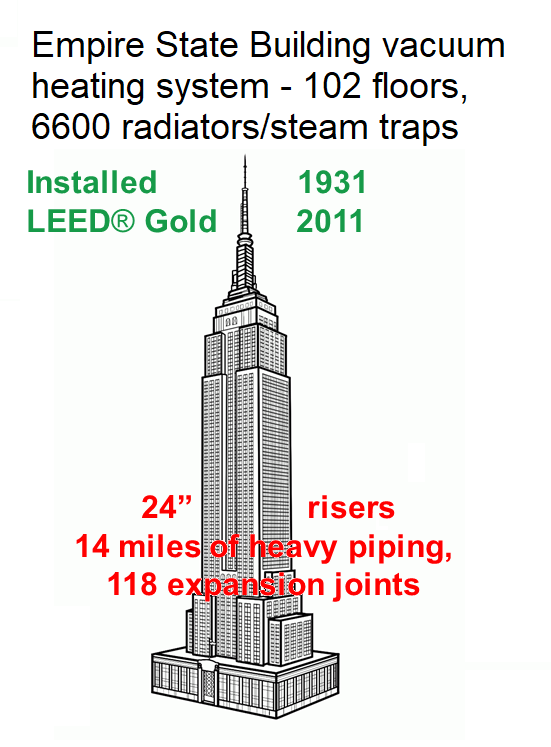The concept of vacuum heating (VH) is very similar to that of heat pipe technology, today’s most efficient and reliable heat transfer method. Water, or another liquid, in a closed tube under deep vacuum (~28.5 Hg”) evaporates at one end and condenses at another end, releasing the latent heat of evaporation. Condensate is then returned through an intricate capillary structure of limited length. The superiority of the heat pipes is based on using latent heat for heat transfer, highest heat transfer coefficients at phase changes, and elimination of pumping. Differently, VH systems operate at mid vacuum - 5 -20" Hg and condensate is returned by gravity without length limitations.
Hydronic heating transfers heat by convection, which is significantly less efficient then the latent heat transfer method. One pound of condensed steam carries more heat than 25 pounds of hot water cooled by 4.4°C inside the radiators with no pumping needed.
In known vacuum systems the latent heat of the water is delivered into radiators from the boiler or district steam. A 5-10” Hg vacuum is maintained by a vacuum pump, and in turn the steam temperature is reduced from 212 to ~180- 195oF. Vacuum system operation depends strongly from steam traps maintanence.
Steam heating conversion into vacuum heating was very popular in 1900th saving on average saved 30-35% of heating cost. Original heavy steel piping counts to around 30-50% of the heating system total weight, and is actually useless burden to be heated every heating cycle
. Not many people aware that LEED Gold Empire State Building is heated by Vacuum Heating (VH) System was restored to original design in iconic 2011 retrofit. Conversion into hydronic heating would require electricity and precious space for pumping station every 20th floor so would be prohibitantly expensive. Exergy analysis indicates that such conversion would not improve efficiency, but plumbing upgrade would boost efficiency by at least 25- 30% over hydronic system


